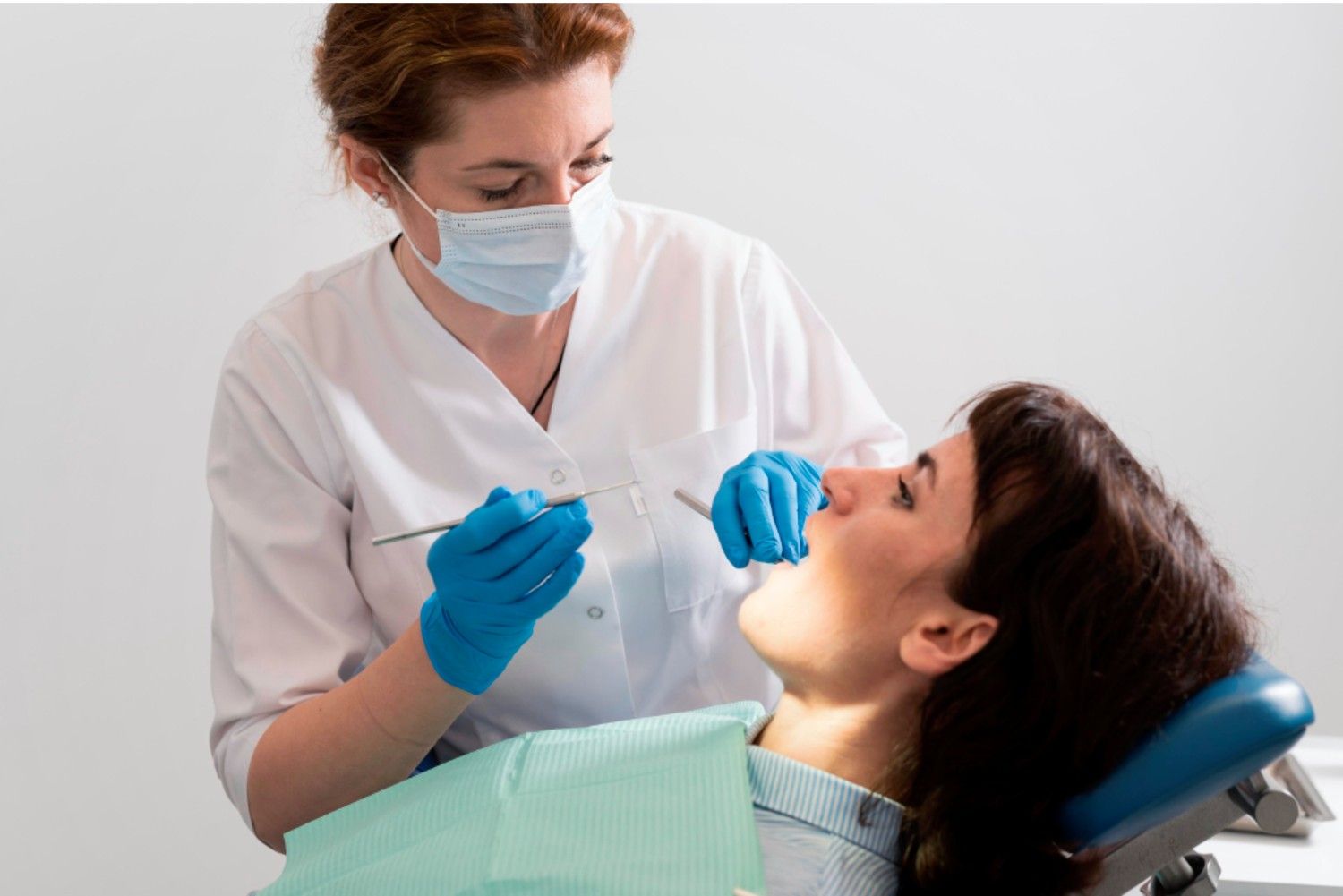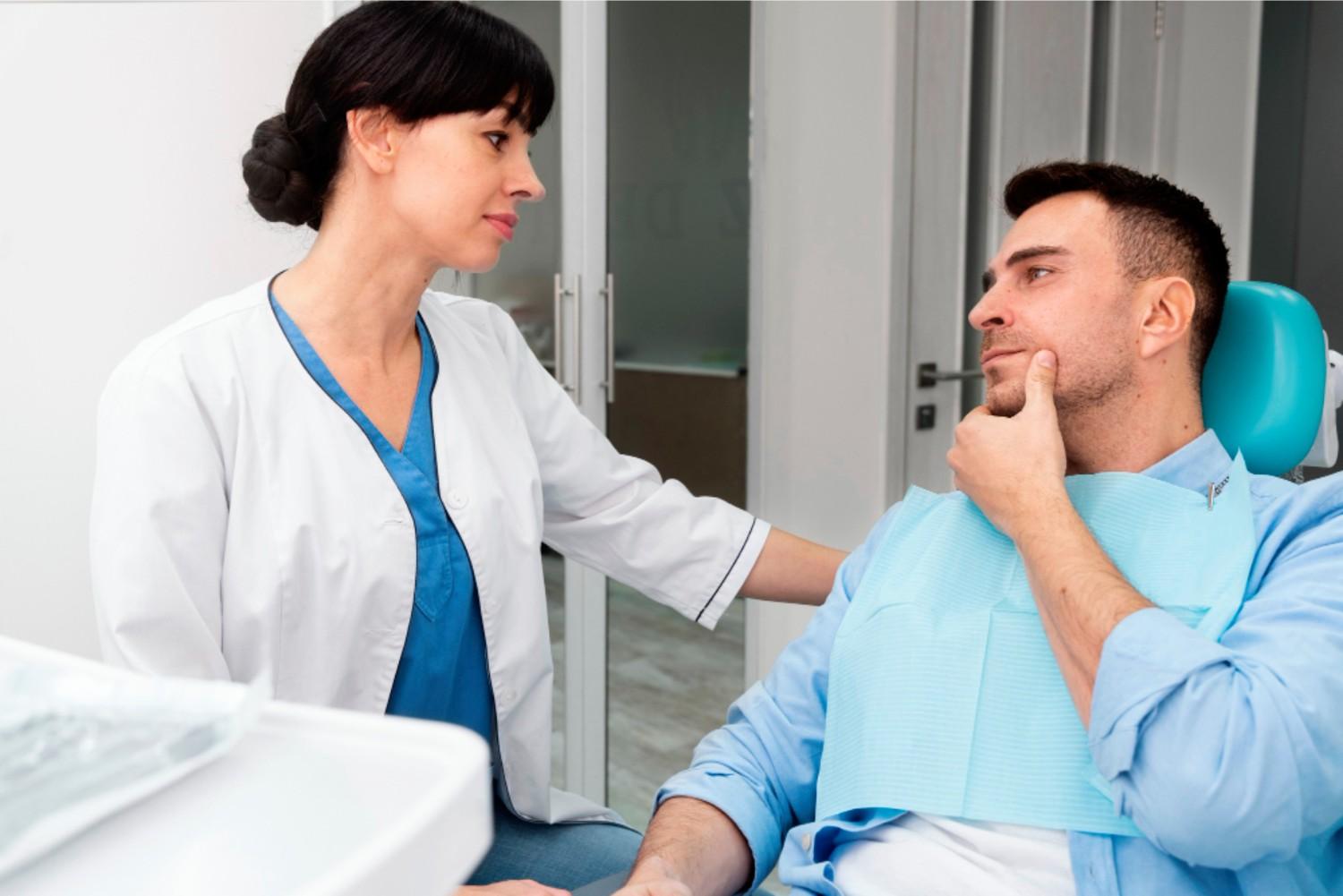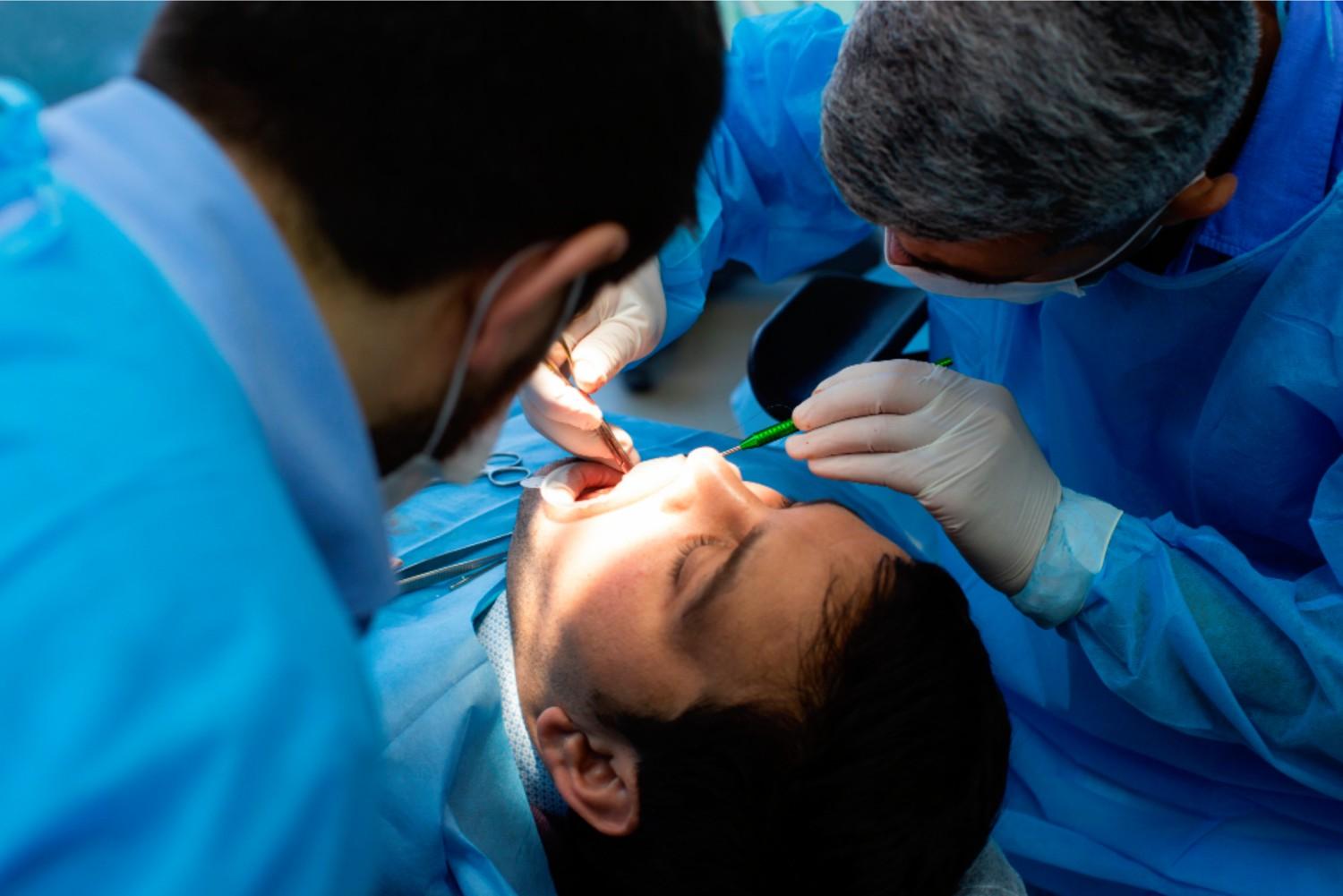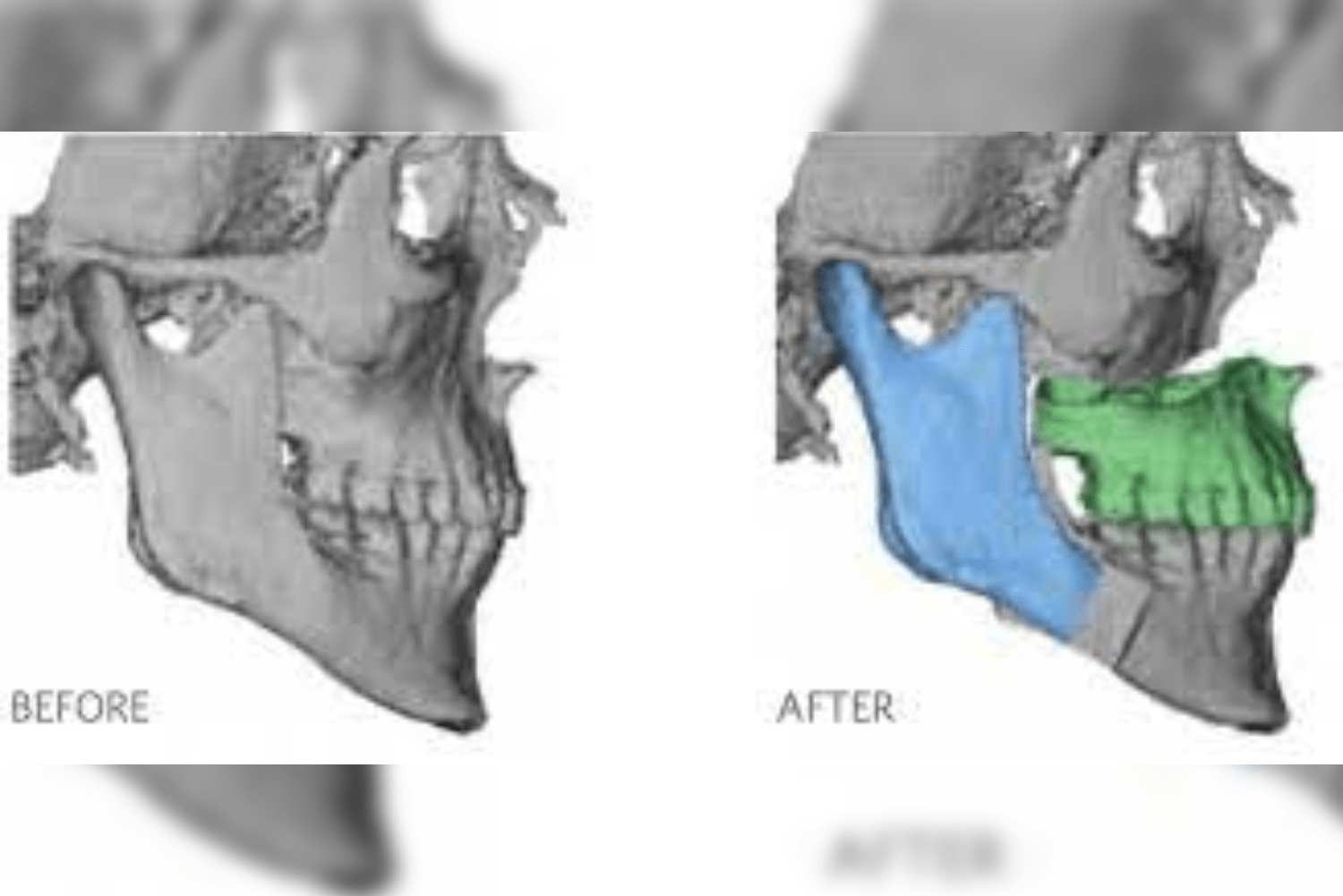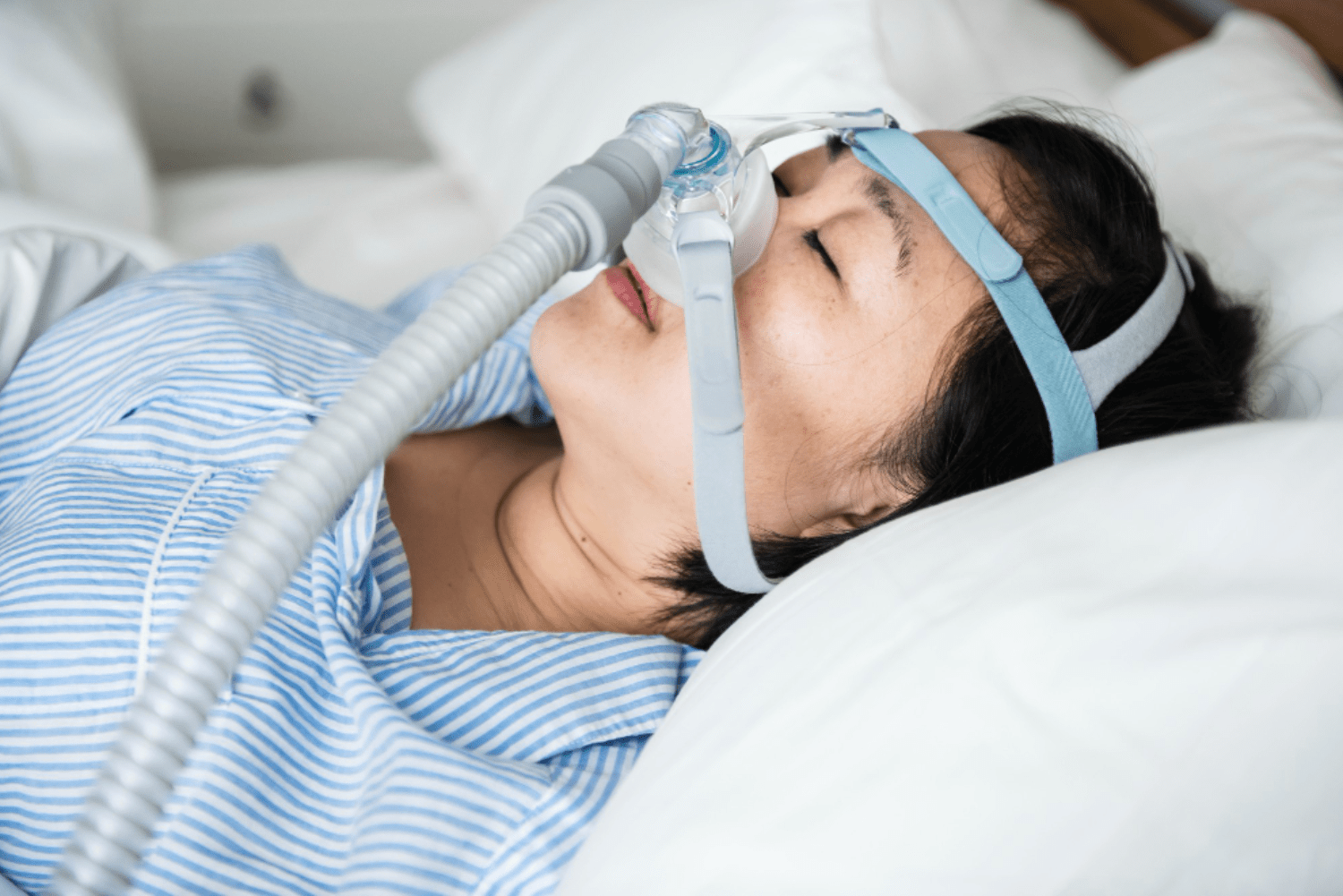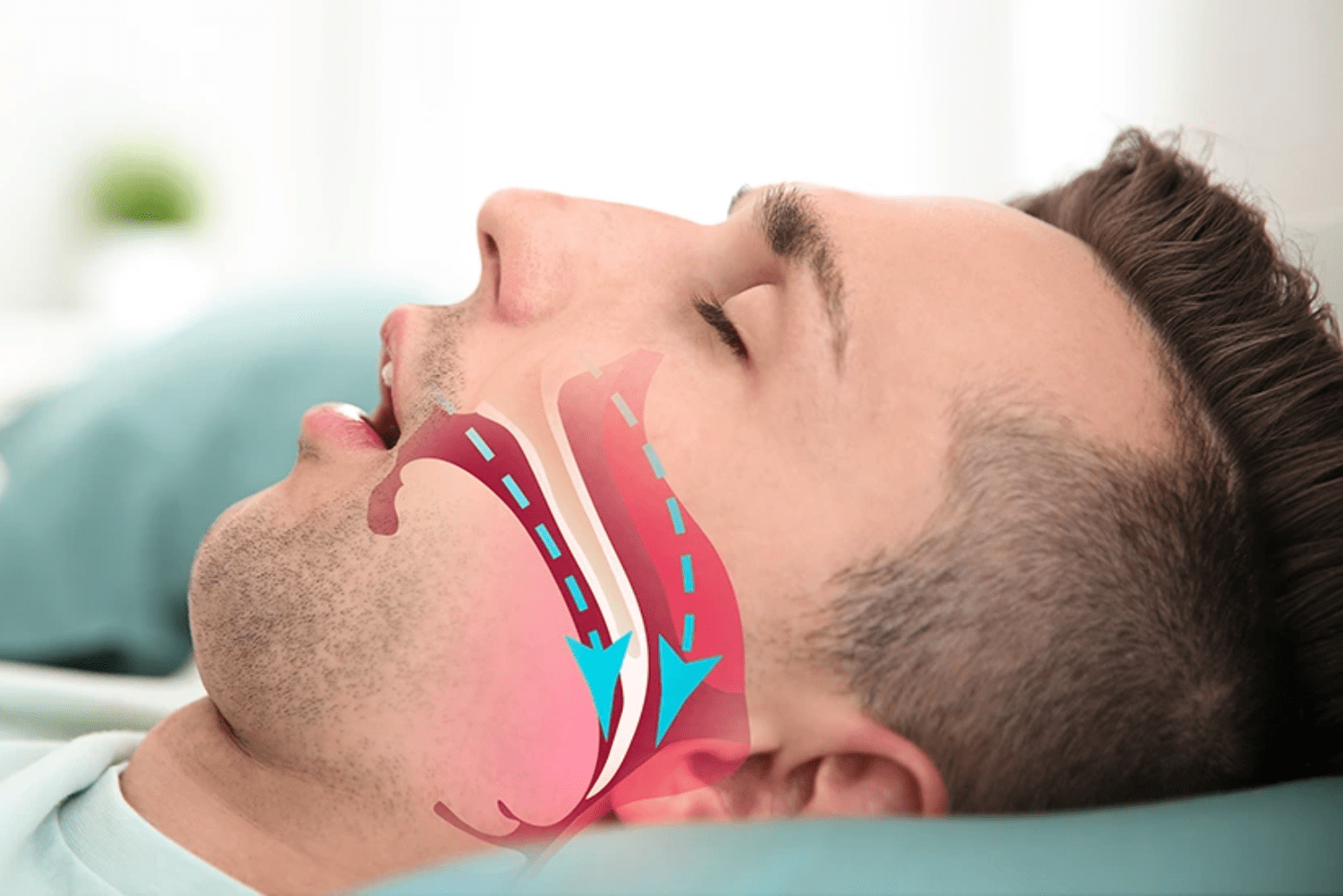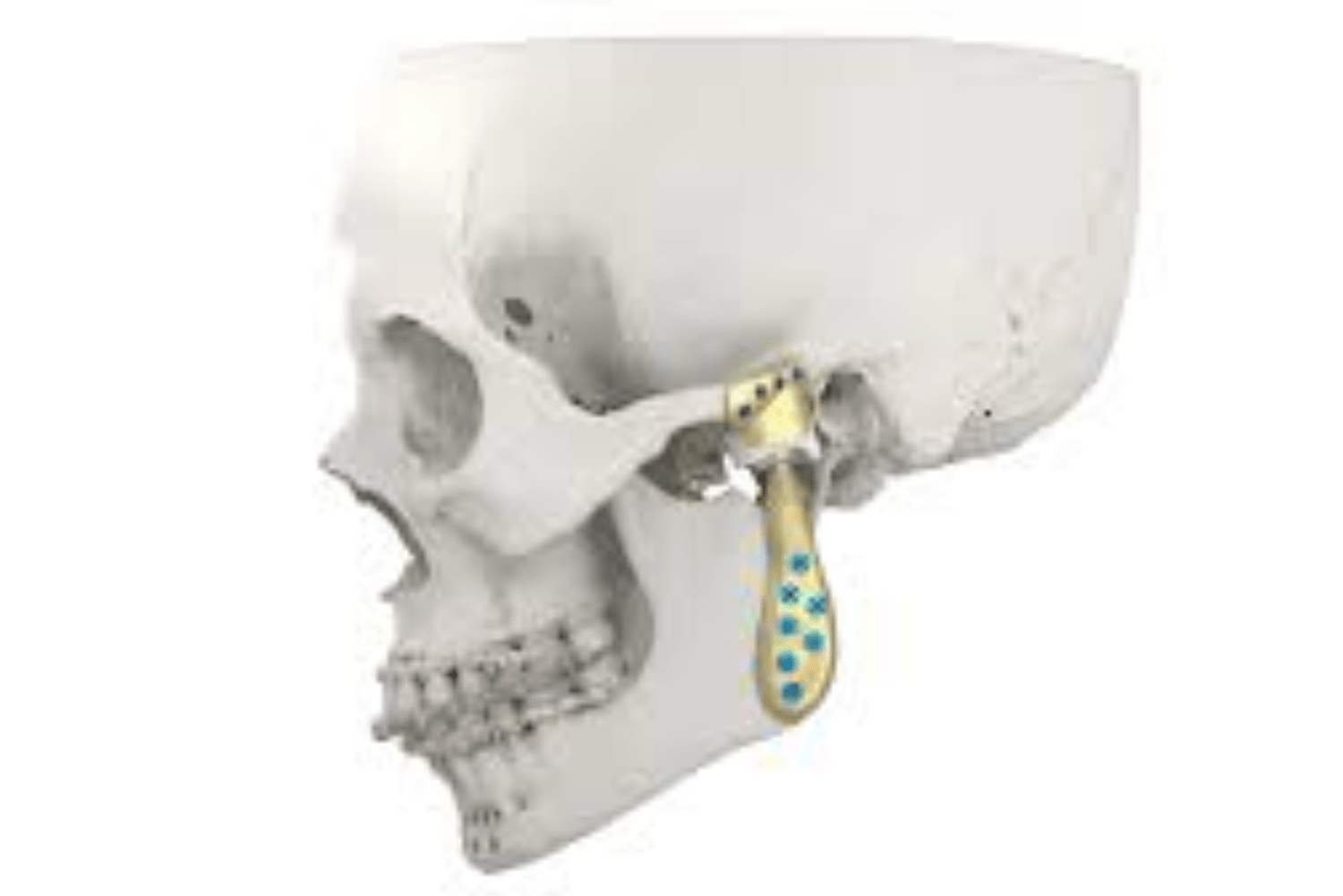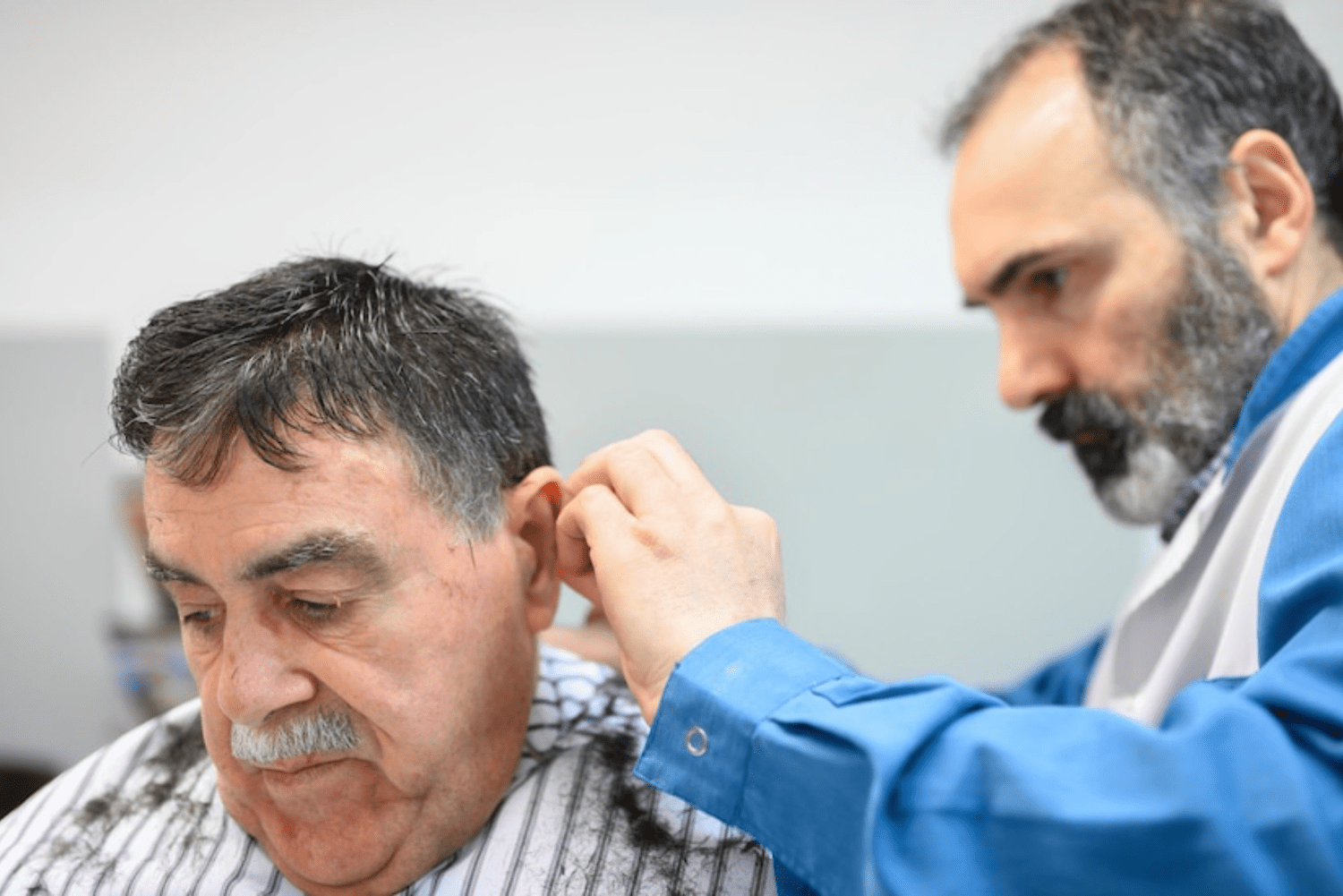Full mouth rehabilitation, also known as full mouth reconstruction or restoration, is a comprehensive dental treatment that involves restoring the entire mouth to optimal health, function, and aesthetics.
It encompasses various aspects to restore the patient’s functionality and aesthetics.
1. Comprehensive approach: Involves multiple procedures.
2. Restoring function: Improving chewing, occlusion, and speaking.
3. Aesthetic improvement: Enhancing the appearance and smile pattern,
4. Pain relief: reducing the discomfort.
VARIOUS METHODS OF RESTORING A FULL MOUTH
1. Dental implants
2. Crowns
3. Bridges
4. Veneers
5. Orthodontics
6. Periodontal therapy
Full mouth rehabilitation is a personalized treatment plan designed for each patient’s unique needs.
CASE HISTORY
Patient has no relevant medical history, controlled diabetes, under medication.
73-year-old male patient with a chief complaint of a badly done upper prosthesis (anterior teeth) elsewhere
Lower arch presented with a few mobile teeth and chipped crowns
INTRAORAL EXAMINATION



- Fixed implant prosthesis on the upper arch from 14 to 25, and prosthetic crowns in relation to 46,35,36
- Clinically missing teeth in relation to 15,16,17,18,25,26,27,28,31,48.
- Grade 3 mobility in relation to 32.
- Grade 1 mobility in relation to 33 and 42.
- Grade 2 with recession mobility in relation to 41
- Root canal-treated root stump 44
- Bony spicule irt 26
TREATMENT PLAN
FULL MOUTH REHABILITATION
1. Upper implant-supported prosthesis
2. Lower rehabilitation using a fixed partial denture
UPPER IMPLANT SUPPORTED PROSTHESIS
- Removal of existing upper prosthesis and implants and fixation of 2 zygomatic implants and three endosseous implants on the anterior region.
- Implant-supported prosthesis on the upper implants, as in an on 4 implant prosthesis
LOWER REHABILITATION USING A FIXED PARTIAL DENTURE
- Root canal treatment in relation to
- Extraction in relation to 32,41,44
- Fixed partial denture from 36 to 46
The treatment plan is executed in 2 phases
PHASE 1
- Surgical placement of zygomatic implants was done along with 3 endosseous implants on the anterior region in relation to 12,21,23 under general anesthesia.
- Root canal treatment and obturation done in relation to33,34,35,36,43,42, after the extraction of 32, 41, and 44
- An immediate denture is delivered after the implant placement to stabilize the vertical dimension.

PHASE 2
- Recalled the patient after 3 months to promote the healing of the implants with bone called osseointegration.
- Multiunit abutment placed, and relining of the immediate denture done with hard denture liners.
FABRICATION OF 4 UPPER IMPLANT-SUPPORTED PROSTHESIS
Steps
- Impression copying
Impression coping in dental implants is a crucial step in the fabrication of implant-supported restorations.
Purpose
1. Accurate transfer: Transferring the implant position to a working model.
2. Restoration fabrication: Creating precise implant-supported crowns or prosthesis.
The technique we used is the open tray technique, which is a method to capture the precise position and orientation of dental implants.
Key Steps
1. Impression coping placement: An impression coping is attached to the implant or abutment.
2. Tray preparation: A custom tray with an open top is used.
3. Impression material injection: Impression material is injected around the coping.
4. Tray removal: The tray is removed, and the coping remains in the impression.
Impression coping in dental implants requires expertise and attention to detail.


Impression coping

Open tray technique
2. jig trial A jig trial is a verification process in dental implantology where a precise replica or jig of the planned prosthesis is used to check the accuracy of implant placement and the fit of the prosthesis on the implants.
Procedure
1. Jig fabrication: A verification jig is created based on the planned restoration.
2. Trial fitting: The jig is tried on the implants to verify accuracy.
Purpose
Confirm implant positions match the planned restoration.
2. Assess fit: Evaluate the fit of the prosthesis on the implants.


3. Bite registration
Bite registration is a dental procedure that records the relationship between the upper and lower teeth, capturing the precise occlusal relationship.
Occlusal relationship: Records how the upper and lower teeth interact.
Accurate capture: Ensures precise bite registration.
This procedure is essential for full mouth dental rehabilitation to record the vertical ,horizontal relationships of the upper and lower jaws.

4. Denture trial
To determine the position and vertical dimension of the final prosthesis
A denture trial in full mouth rehabilitation is an inevitable step where a trial denture is placed in the patient’s mouth to:
1. Assess the denture’s fit and comfort.
2 . Evaluate the appearance and smile.
3. Check the denture’s function and bite.
It allows for necessary adjustments before final cementation and
Ensures patient satisfaction with the denture’s appearance and function.

5. Metal framework trial


It will ensure the framework fits accurately on the implants and passively on the implants also evaluate the framework’s relationship with opposite teeth
It minimizes the risk of implant failure or prosthesis malfunction and ensures optimal function and aesthetics.
The metal framework trial is essential for achieving a successful implant-supported prosthesis.
6. Bisque trial


A bisque trial in full mouth rehabilitation is a step where a trial prosthesis, typically made of ceramic or porcelain, is placed in the patient’s mouth to evaluate aesthetics, fit, and occlusion
It allows necessary adjustments before finalization, also patient satisfaction with aesthetics and function.
7. Final cementation


Intraoral and extraoral images of before and after






